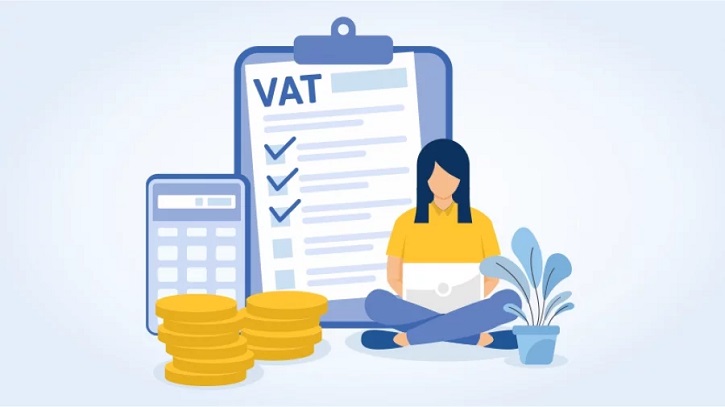Moving towards ‘Smart Bangladesh’ through automated accounting systems
Value Added Tax (VAT) was introduced back in 1991, replacing sales tax and excise duties in Bangladesh through the enactment of the Value Added Tax Act, 1991. Later, to make VAT administration more compatible with global standard practices, The Value Added Tax and Supplementary Duty Act, 2012, was drafted and eventually enacted in July 2019.
In FY22, the National Board of Revenue (NBR) collected Tk1.08 trillion in VAT, up by 11.9% from the previous fiscal year, making it the largest source of government revenue.
We have come a long way since 1991, with greater industrialization, growing trade, and modernized organizational processes, all achieved against the backdrop of a more educated, tech-savvy workforce, a global pandemic, ever-evolving lifestyles, mass digitization, continuous tech advancements, and more. These forces have impacted the taxation system, both for the government and businesses.
In these evolving times, we have witnessed organizations struggle to keep up with the changing landscape of VAT regulations and implementation.
Value Added Tax (VAT) is a crucial aspect of the modern taxation system, where taxes are levied at each stage of the value chain, borne at each stage by the successive consumer, whether they are value adding entities, intermediaries, or the final customer. VAT compliance has traditionally been a complex and time-consuming task for businesses and organizations, with numerous challenges and difficulties to overcome.
A huge amount of VAT remains out of the net each year due to the inadequacy and inefficiency of the system, particularly due to entities that have stalled from undergoing modernization or automation.
Bangladesh continues to face significant challenges in maintaining its VAT obligations. The manual processes of data entry, record-keeping, and compliance tracking are not only time-consuming but also prone to errors. Keeping up with the frequent changes in VAT regulations and rates takes time, leading to potential non-compliance risks and penalties.
Additionally, the lack of real-time visibility into financial transactions causes difficulty for businesses to gain insights and make informed decisions. These challenges hinder business growth, productivity, and competitiveness and pose barriers to sustainable digitalization.
Streamlining with technology
Amidst all the challenges and uncertainty, technology provides smart solutions to these various problems. The implementation of VAT Management Systems software can streamline how businesses manage their VAT obligations.
These software solutions are specifically designed to conform to VAT compliance procedures, automate manual tasks, and ensure accuracy in record-keeping. They can automatically capture and categorize VAT-related transactions, generate comprehensive reports, and keep businesses up to date with the latest VAT regulations and rates.
Additionally, integrating VAT Management Systems with software-based accounting systems takes both VAT compliance and organizational accounting practices to the next level. By itself, accounting systems softwares offer organizations a centralized and real-time approach to managing financial data, thereby providing businesses with a holistic view of their financial transactions.
By integrating VAT management software with the accounting systems software, companies can seamlessly track and manage VAT-related transactions, reconcile records, and generate accurate VAT reports. This can empower businesses with real-time visibility, insights, and analytics, as well as increase their VAT efficiency — enabling them to make informed decisions and to optimize their operations, ultimately driving business growth.
For allowing businesses and organizations to mitigate risks and unlock growth opportunities, a robust VAT management system has now become essential.
Benefitting the government
An automated VAT management system can expedite the process of achieving the goal of a “Smart Bangladesh,” as envisioned by the government.
The government can reap several benefits from utilizing VAT management systems. They can streamline the VAT collection process by automating the calculation, reporting, and collection of VAT, reducing human errors, and minimizing the risk of tax evasion. This can result in improved revenue collection and increased compliance, leading to enhanced fiscal stability and economic growth.
Moreover, VAT management software can provide real-time data and analytics, enabling the government to make informed decisions on tax policies, to identify potential revenue leakages, and to conduct effective audits. The software can also simplify VAT return filing for businesses, reducing the compliance burden and fostering a favourable business environment.
VAT rates can even be further rationalized by widening the collection net, thereby lessening the burden on the individual consumer, while ensuring greater revenue for the government.
VAT has sometimes been criticized as being regressive, with a greater tax load on lower income families as consumption forms a greater percentage of their household income and expenditure. An automated VAT Management Systems will further enable the government to design and collect VAT, while ensuring that the underprivileged is properly identified and compensated through rebates or payments — and this can be made to be revenue neutral.
The adoption of VAT management software in Bangladesh would not just be a technological upgrade, but a key driver of digital acceleration for the country. Embracing digital solutions for VAT management is a significant step towards digital transformation of Bangladesh, positioning the country as a forward-thinking and technologically advanced economy.
With VAT management software as a catalyst, the nation can embark on a transformative journey toward a more digitally enabled, transparent and prosperous future.
Shama-E Zaheer is Chairman of Mir Info Systems Ltd. He can be reached at shamaezaheer@gmail.com.
Source: Dhaka Tribune.

